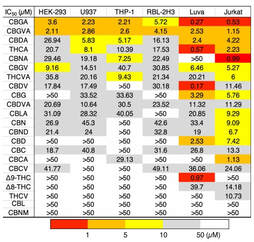The Faouzi Laboratory was established in January 2021 at The Queen’s Medical Center. The lab is headed by Malika Faouzi, Ph.D. and located within the University of Hawaii Tower on the campus of The Queen’s Medical Center.

Dr. Faouzi’s dual training in cell physiology and cancer biology allowed her to acquire unique skill sets in biophysical, pharmacological, cell and molecular biology approaches elucidating cell signaling relevant to cancer progression and inflammatory signaling pathways. Her work led to the original identification of Orai3 channels as a central mechanism of calcium homeostasis in breast cancer cells that promotes cell proliferation and survival through the regulation of the oncogene c-myc and tumor suppressor p53. Subsequent training as a postdoc and junior scientist lead her into the drug screening field as it relates to immune cell function. She handled both natural products and synthetic chemical libraries. Her research findings prompted her interest to investigate the importance of calcium signaling proteins in modulating cancer progression and inflammatory processes, from their regulation and expression to target drug development.

Principal Investigator
Tel: 1 (808) 691-7926
Fax: 1 (808) 691-7939
mfaouzi@queens.org

Postdoctoral Scientist
(2022)
Faouzi M., Wakano C., Monteilh-Zoller M.K., Neupane R.P., Starkus J.G., Neupane J.B., Cullen A.J., Johnson B.E., Fleig A., Penner R.
Function 3(4):zqac033 (2022).
DOI: https://doi.org/10.1093/function/zqac033 PMID: https://pubmed.ncbi.nlm.nih.gov/35910331/
Fourgeaud, L., Dvorak, C., Faouzi, M., Starkus, J., Sahdeo, S., Wang, Q., Lord, B., Coate, H., Taylor, N., He, Y., Qin, N., Wickenden, A., Carruthers, N., Lovenberg, T. W., Penner, R., & Bhattacharya, A.
European Journal of Pharmacology 853, 299–307 (2019).
DOI: https://doi.org/10.1016/j.ejphar.2019.03.043. PMID: https://www.ncbi.nlm.nih.gov/pubmed/30965058
Faouzi, M., Neupane, R. P., Yang, J., Williams, P., & Penner, R.
Scientific Reports 8(1), 1075 (2018).
DOI: https://doi.org/10.1038/s41598-017-18996-2. PMCID: https://www.ncbi.nlm.nih.gov/pmc/articles/PMC5773534
Faouzi, M., Neupane, R. P., Yang, J., Williams, P., & Penner, R.
Scientific Reports 8(1), 1075 (2018).
DOI: https://doi.org/10.1038/s41598-017-18996-2. PMCID: https://www.ncbi.nlm.nih.gov/pmc/articles/PMC5773534Huang, J., Furuya, H., Faouzi, M., Zhang, Z., Monteilh-Zoller, M., Kawabata, K. G., Horgen, F. D., Kawamori, T., Penner, R., & Fleig, A.
Cell Communication and Signaling: CCS 15(1), 30 (2017).
DOI: https://doi.org/10.1186/s12964-017-0187-9. PMCID: https://www.ncbi.nlm.nih.gov/pmc/articles/PMC5558780
Faouzi, M., Kilch, T., Horgen, F. D., Fleig, A., & Penner, R.
The Journal of Physiology 595(10), 3165–3180 (2017).
DOI: https://doi.org/10.1113/JP274006. PMCID: https://www.ncbi.nlm.nih.gov/pmc/articles/PMC5430208
Faouzi, M., Starkus, J., & Penner, R.
British Journal of Pharmacology 172(21), 5161–5173 (2015).
DOI: https://doi.org/10.1111/bph.13283. PMCID: https://www.ncbi.nlm.nih.gov/pmc/articles/PMC4687807
Faouzi, M., & Penner, R.
Handbook of Experimental Pharmacology 222, 403–426 (2014).
DOI: https://doi.org/10.1007/978-3-642-54215-2_16. PMID: https://www.ncbi.nlm.nih.gov/pubmed/24756715
Zhang, Z., Faouzi, M., Huang, J., Geerts, D., Yu, H., Fleig, A., & Penner, R.
Oncotarget 5(17), 7625–7634 (2014).
DOI: https://doi.org/10.18632/oncotarget.2283. PMCID: https://www.ncbi.nlm.nih.gov/pmc/articles/PMC4202149
Faouzi, M., Kischel, P., Hague, F., Ahidouch, A., Benzerdjeb, N., Sevestre, H., Penner, R., & Ouadid-Ahidouch, H.
Biochimica et Biophysica Acta 1833(3), 752–760 (2013).
DOI: https://doi.org/10.1016/j.bbamcr.2012.12.009. PMID: https://www.ncbi.nlm.nih.gov/pubmed/23266555
1356 Lusitana St. UH Tower 8, Honolulu, HI 96813
The Queen’s Health System Terms of Use | Privacy Policy